Colnago’s C68: the Reinvention of an Unrivalled Heritage
Colnago won the last two Tours de France, with Tadej Pogačar astride the V3Rs... but that isn't the hottest bike in the Colnago catalogue.
Colnago’s recently launched C68 is the latest chapter in the brand’s vaunted C-series line. Because it’s a C-series model this new frame is made-in-Italy, expensive, and unique. Though it is made from carbon fiber it has a direct link to the lugged steel frames Ernesto Colnago turned out when he started his company in 1954, carrying on the legacy as one of the most important road frames of all time.
The Frame that Changed Everything
Colnago’s C-series bikes have long been an object of desire that exceeds even the normal bounds of bike lust. Though Ernesto had played with the material for a long time—examples include the monocoque carbon CX Pista in 1981, the carbon tube and carbon lug Concept in 1986—the first carbon production model from Colnago was the monocoque carbon C35 that debuted in 1989. Though the C35 was one of the first production all-carbon bicycle frames anywhere it was mostly a limited-edition statement piece and wasn’t used in competition. But Colnago’s next carbon bike changed the world.
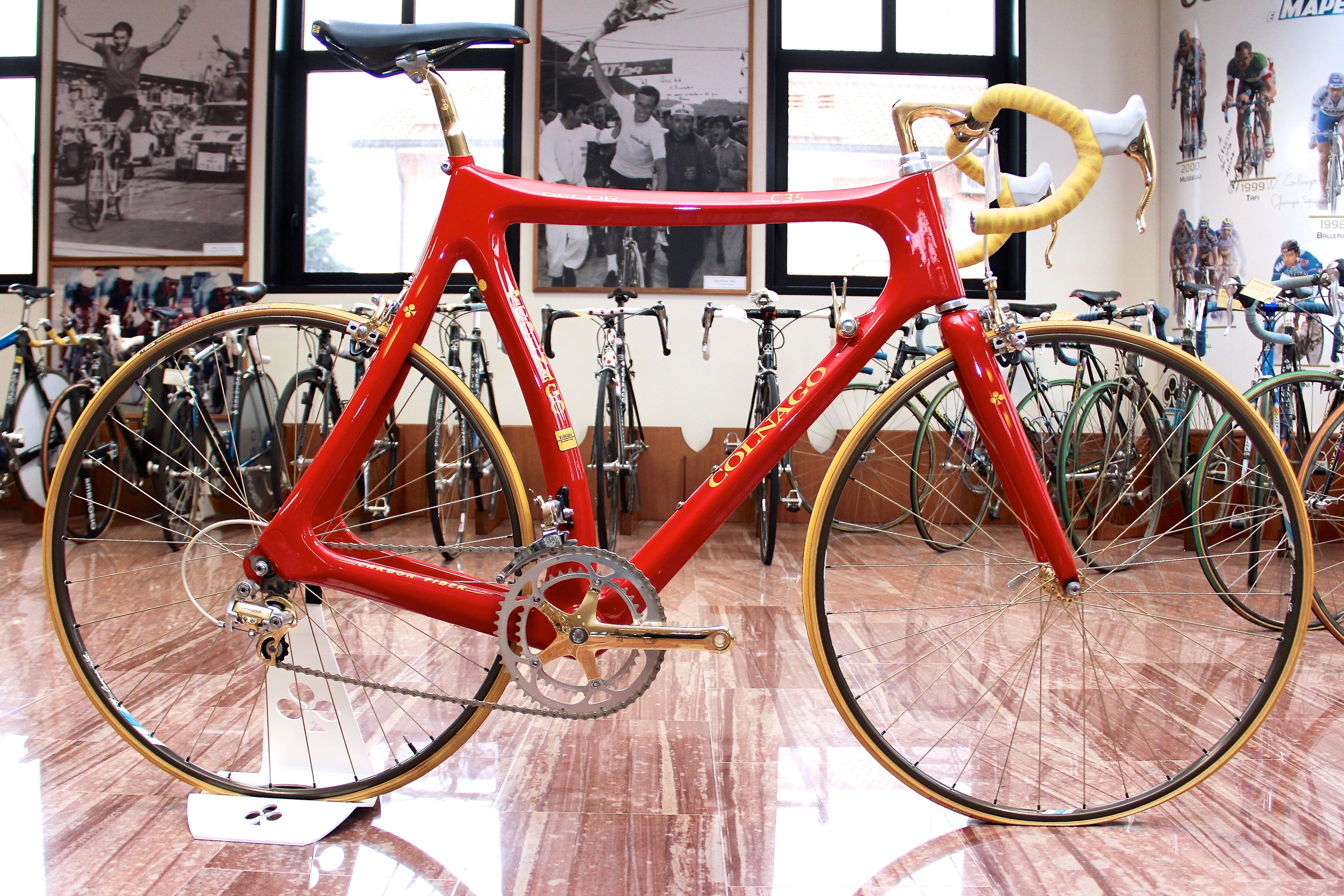 The C40 was one of the first all-carbon frames to see widespread use at the highest level of professional cycling. (The Calfee/Carboframes-made bikes raced by Greg LeMond and Team Z in the 1991 Tour de France are typically considered the first all-carbon frames to race in the professional peloton.) The C40 would go on to win—a lot—thanks in a large part to Colnago’s timely sponsorship of the Mapei team from 1994 to 2002; which was the number one team in the world for all but one of those years. It was the first carbon bike to win Paris-Roubaix (Franco Ballerini, 1995), a feat that was considered shocking at the time as many prognosticators expected the bike to fail at the first section of pavé.
The C40 was one of the first all-carbon frames to see widespread use at the highest level of professional cycling. (The Calfee/Carboframes-made bikes raced by Greg LeMond and Team Z in the 1991 Tour de France are typically considered the first all-carbon frames to race in the professional peloton.) The C40 would go on to win—a lot—thanks in a large part to Colnago’s timely sponsorship of the Mapei team from 1994 to 2002; which was the number one team in the world for all but one of those years. It was the first carbon bike to win Paris-Roubaix (Franco Ballerini, 1995), a feat that was considered shocking at the time as many prognosticators expected the bike to fail at the first section of pavé.
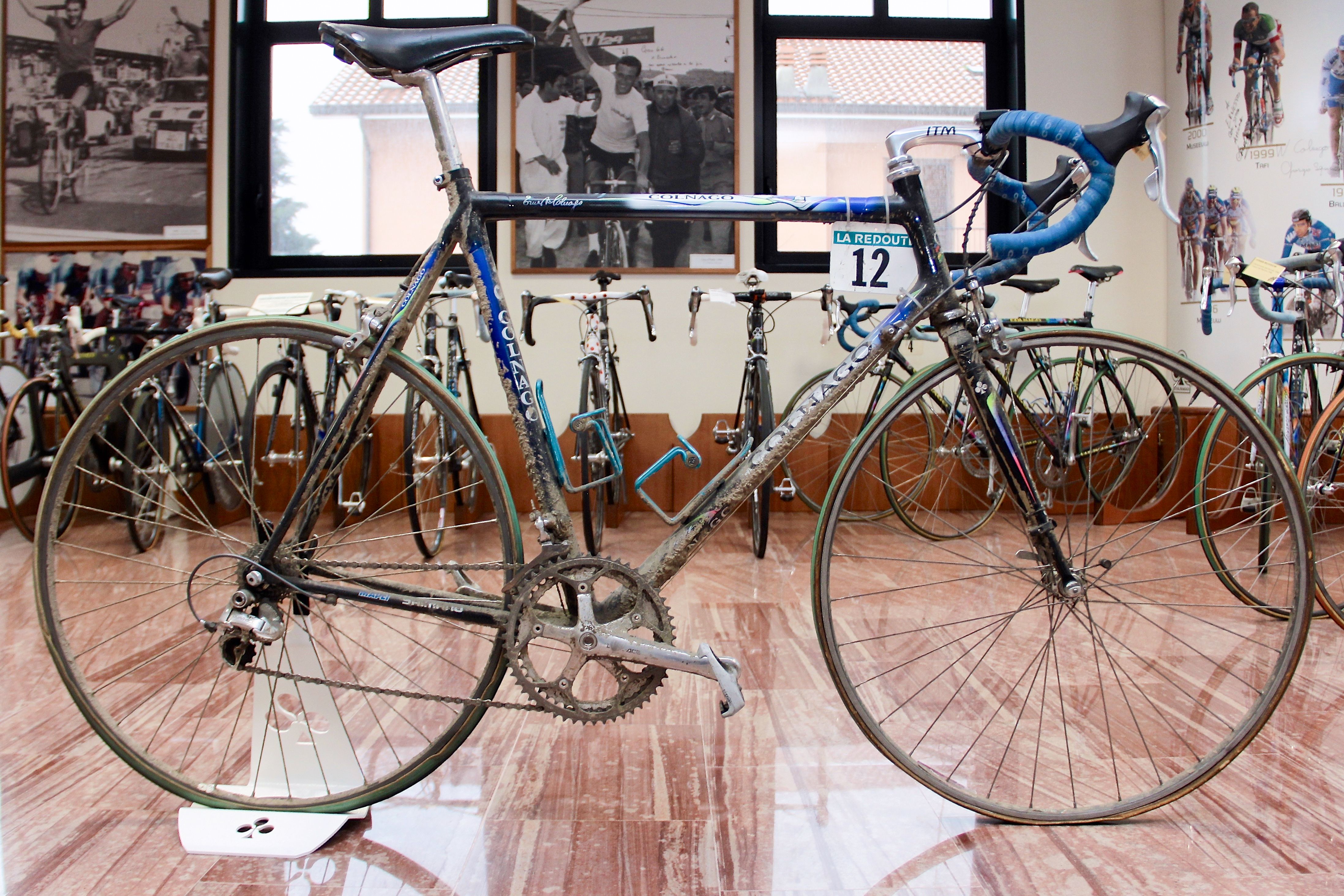 The next year the C40 swept the Paris-Roubaix podium, won the World Championships, and the Giro d’Italia. The C40 won the Paris Roubaix several more times (1998, another podium sweep in 1999, and 2000), the World Championships (1998, 2001), Liège–Bastogne–Liège (2002), and many other races. It’s not hyperbole to say that the C40 was one of the most significant bicycles ever made because it very visibly helped prove and legitimise the carbon fibre bicycle at the highest level and in the toughest bike races in the world. The C40 helped make carbon what it is today: The dominant material for high-performance bicycles.
The next year the C40 swept the Paris-Roubaix podium, won the World Championships, and the Giro d’Italia. The C40 won the Paris Roubaix several more times (1998, another podium sweep in 1999, and 2000), the World Championships (1998, 2001), Liège–Bastogne–Liège (2002), and many other races. It’s not hyperbole to say that the C40 was one of the most significant bicycles ever made because it very visibly helped prove and legitimise the carbon fibre bicycle at the highest level and in the toughest bike races in the world. The C40 helped make carbon what it is today: The dominant material for high-performance bicycles.
C-Series After the C40
After the C40 came the C50—the C50 sparked a few offshoots like the Extreme C, Extreme Power, EPS, and the C50 CX—then the C59, the C59 Disc (one of the first full carbon disc brake compatible road bikes) the C60, and, in 2018, the C64. As the years progressed, the C-series saw less use as a race bike. Colnago’s pro riders gravitated away from the somewhat heavy tube-and-lug frames to the lighter, monocoque Colnago frames (M10, V-series) which were made in Asia.
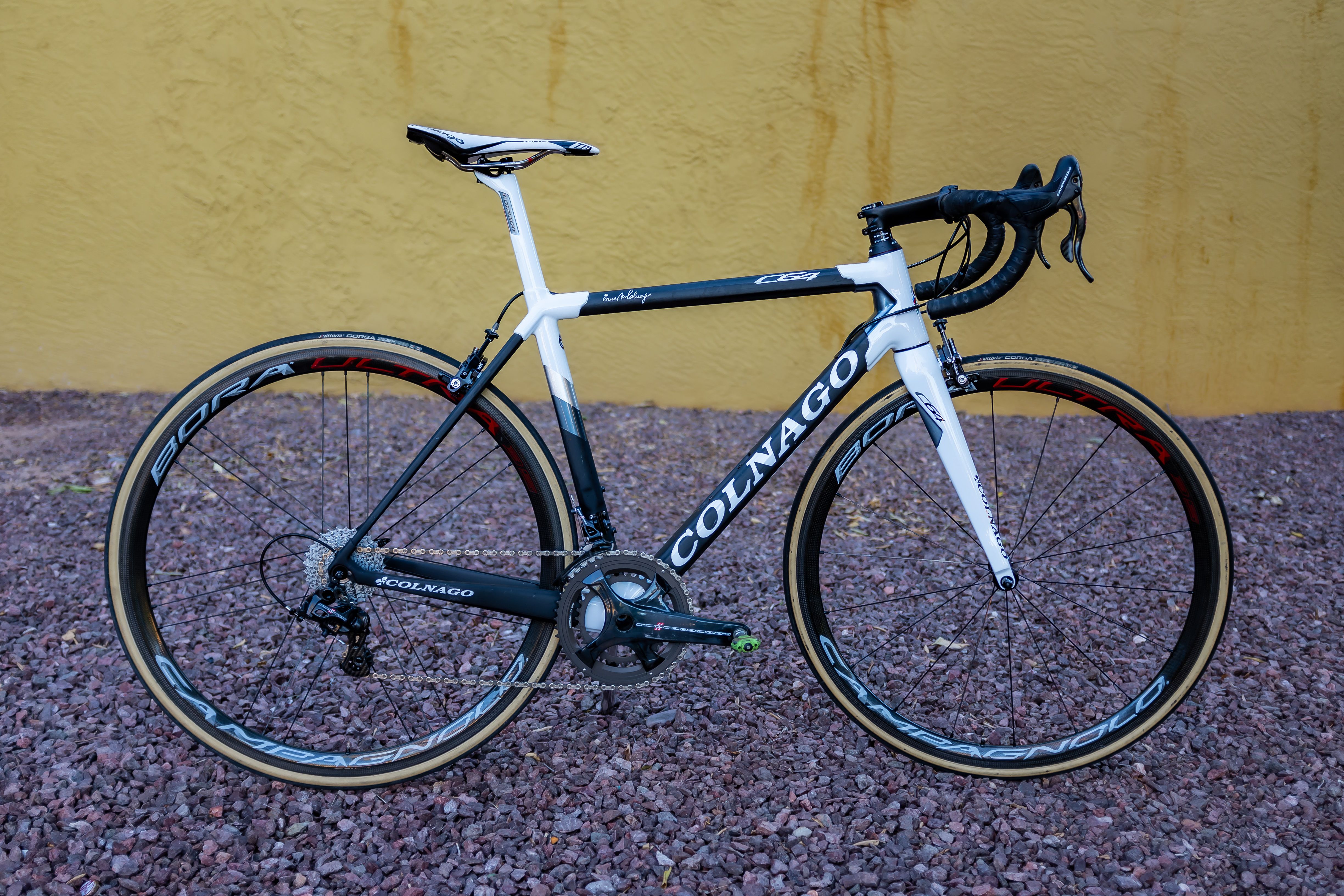 But the C-series retained top billing in Colnago’s line because it continued to use a tube and lug design—just like the first Colnago Ernesto made in 1954—while still being made in Italy under Ernesto’s bedroom. The C-series also rides uniquely. It’s more robust and planted to the pavement than the average carbon race bike, but still fast, smooth, and flowing with uncommon grace. It is a ray of difference in a sea of homogeneity.
But the C-series retained top billing in Colnago’s line because it continued to use a tube and lug design—just like the first Colnago Ernesto made in 1954—while still being made in Italy under Ernesto’s bedroom. The C-series also rides uniquely. It’s more robust and planted to the pavement than the average carbon race bike, but still fast, smooth, and flowing with uncommon grace. It is a ray of difference in a sea of homogeneity.
The C68: Legacy Reinvented
For 2022, there is a new entry into the C-series: the C68. And it could be the most significant C-series model since the C40.
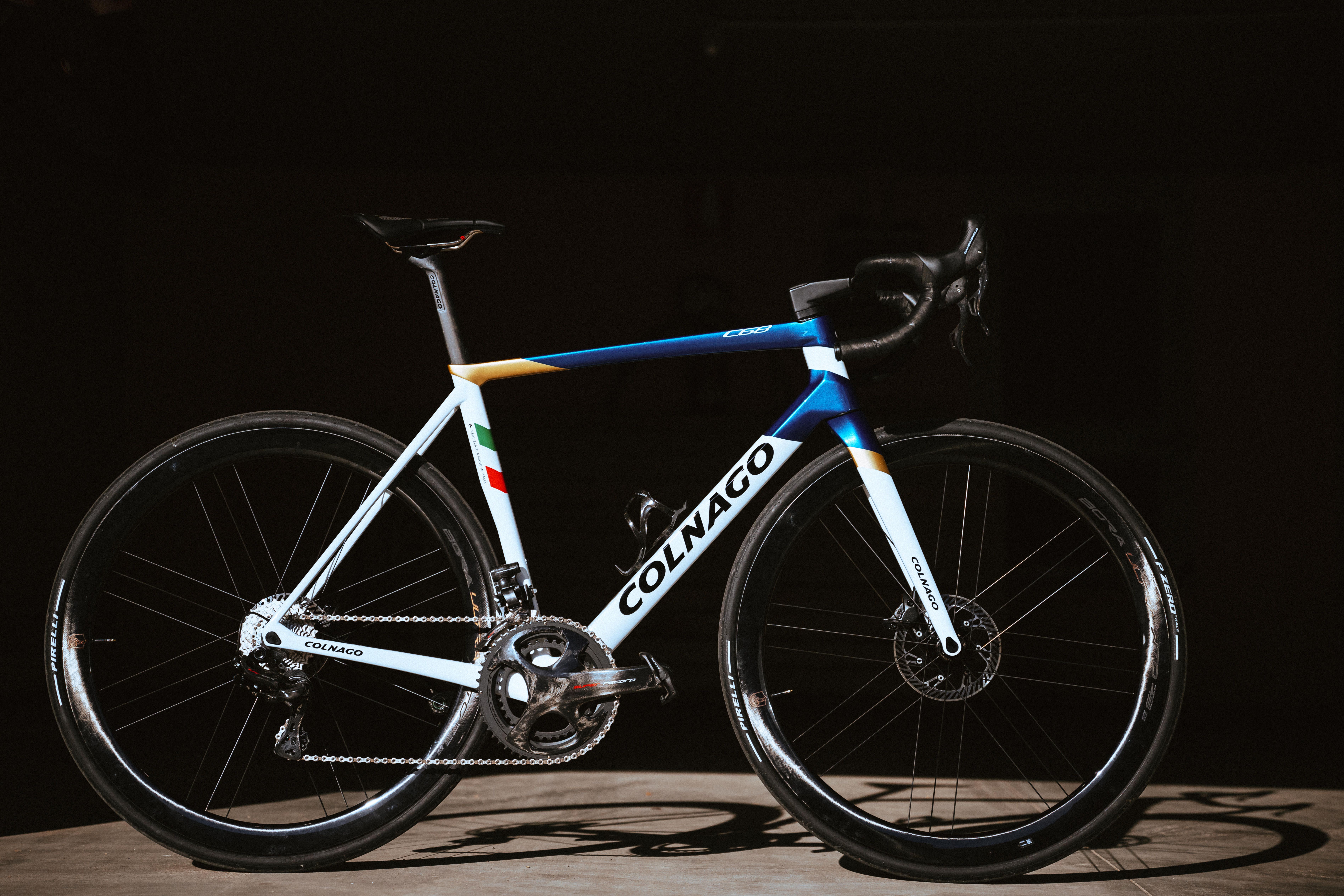 This is the first C-series since the C35 in 1989 that does not use tube and lug construction. But it also does not use monocoque construction like the V3R-s (Tadej Pogačar’s bike) or C35. Rather it’s a modular design that’s a little bit tube and lug, and also a little bit monocoque.
This is the first C-series since the C35 in 1989 that does not use tube and lug construction. But it also does not use monocoque construction like the V3R-s (Tadej Pogačar’s bike) or C35. Rather it’s a modular design that’s a little bit tube and lug, and also a little bit monocoque.
The C68’s major tube sections are individually moulded with integrated joints. These sections are then fit together and glued. For example, the down tube and most of the head tube are one piece, while the top tube incorporates the upper part of the head tube. During assembly of the C68 frame, the top tube section slides over the down tube/head tube section. The bulk of the seat stays and chainstays gets moulded as a single piece, while the seat tube section incorporates the bottom bracket shell and seat stay and the down tube stubs.
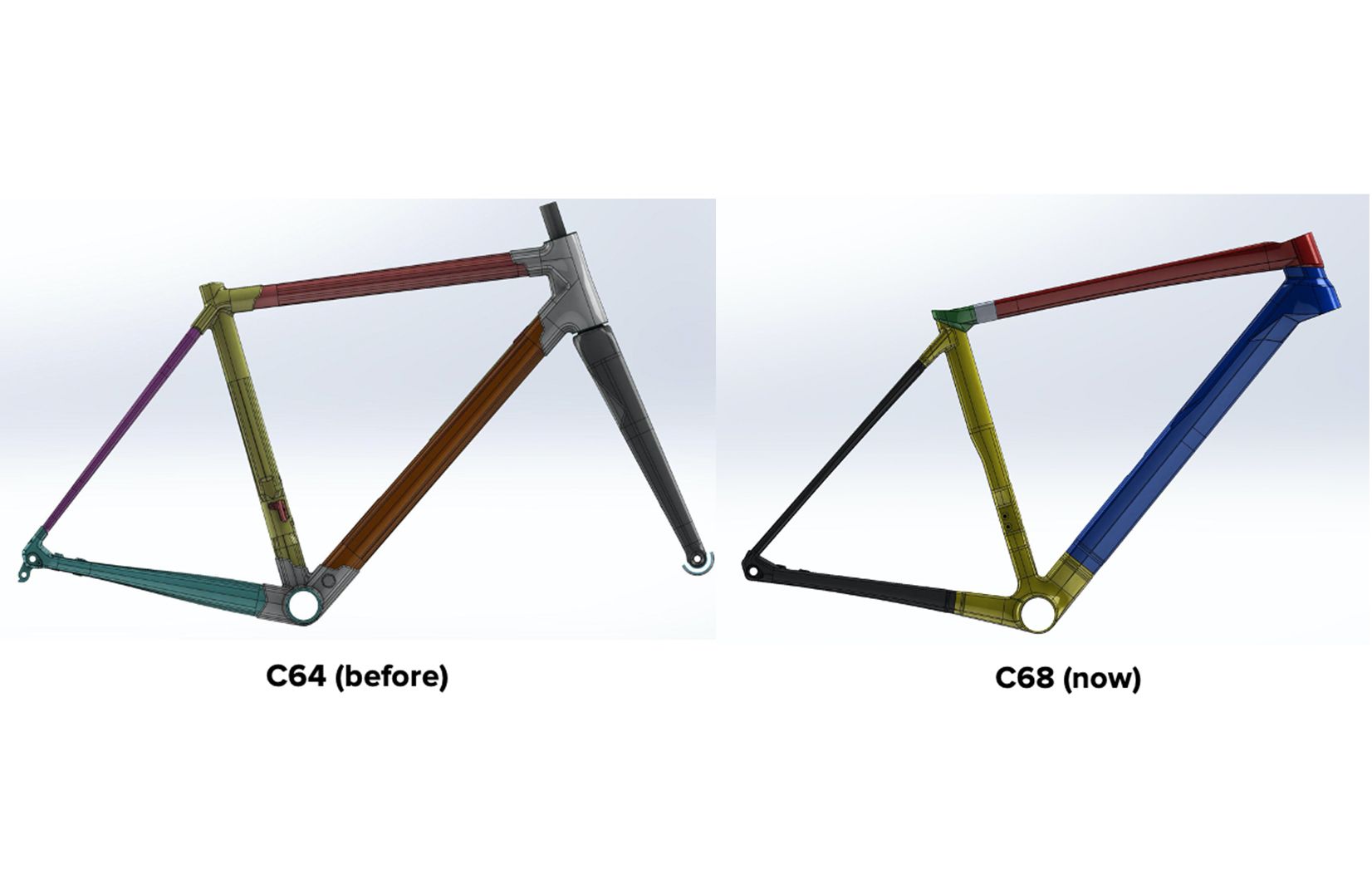 All of this claims to improve frame performance—less redundant material, more layup optimisation, better manufacturing techniques—and gives the designers greater control of frame stiffness and feel/comfort. It also gives the frame a more sleek and modern profile, but there are still some visible lug-like joints that pay tribute to C-series history. Weight, however, doesn’t come down relative to the C64—in fact, the C68 is a bit heavier than the C64 (about 900 grams for the second-to smallest frame size). The all carbon c68 weighs 925 grams (size 485) while the one with titanium lugs comes in at 935 grams. But the C-series has never been about being the lightest thing around either.
All of this claims to improve frame performance—less redundant material, more layup optimisation, better manufacturing techniques—and gives the designers greater control of frame stiffness and feel/comfort. It also gives the frame a more sleek and modern profile, but there are still some visible lug-like joints that pay tribute to C-series history. Weight, however, doesn’t come down relative to the C64—in fact, the C68 is a bit heavier than the C64 (about 900 grams for the second-to smallest frame size). The all carbon c68 weighs 925 grams (size 485) while the one with titanium lugs comes in at 935 grams. But the C-series has never been about being the lightest thing around either.
 The C68 comes in seven stock sizes—down from nine—however, the new construction method makes it easier to accommodate custom stack and reach requests—with more range of customisation available—which should speed up the timeline of custom orders (I’ve heard quotes of 90 to 120 days for a custom C68). Colnago has always said that, if you really, really, wanted a custom C-series they could make you one. The timelines, however, were rumoured to be ridiculous. There may be riders still waiting for the custom C50 they ordered in 2004.
The C68 comes in seven stock sizes—down from nine—however, the new construction method makes it easier to accommodate custom stack and reach requests—with more range of customisation available—which should speed up the timeline of custom orders (I’ve heard quotes of 90 to 120 days for a custom C68). Colnago has always said that, if you really, really, wanted a custom C-series they could make you one. The timelines, however, were rumoured to be ridiculous. There may be riders still waiting for the custom C50 they ordered in 2004.
And if the range of customisation available within the new construction method isn’t enough for your needs, there’s a second—and more expensive—customisation option that uses custom 3D-printed titanium joints for the upper head tube, and the seat tube cluster.
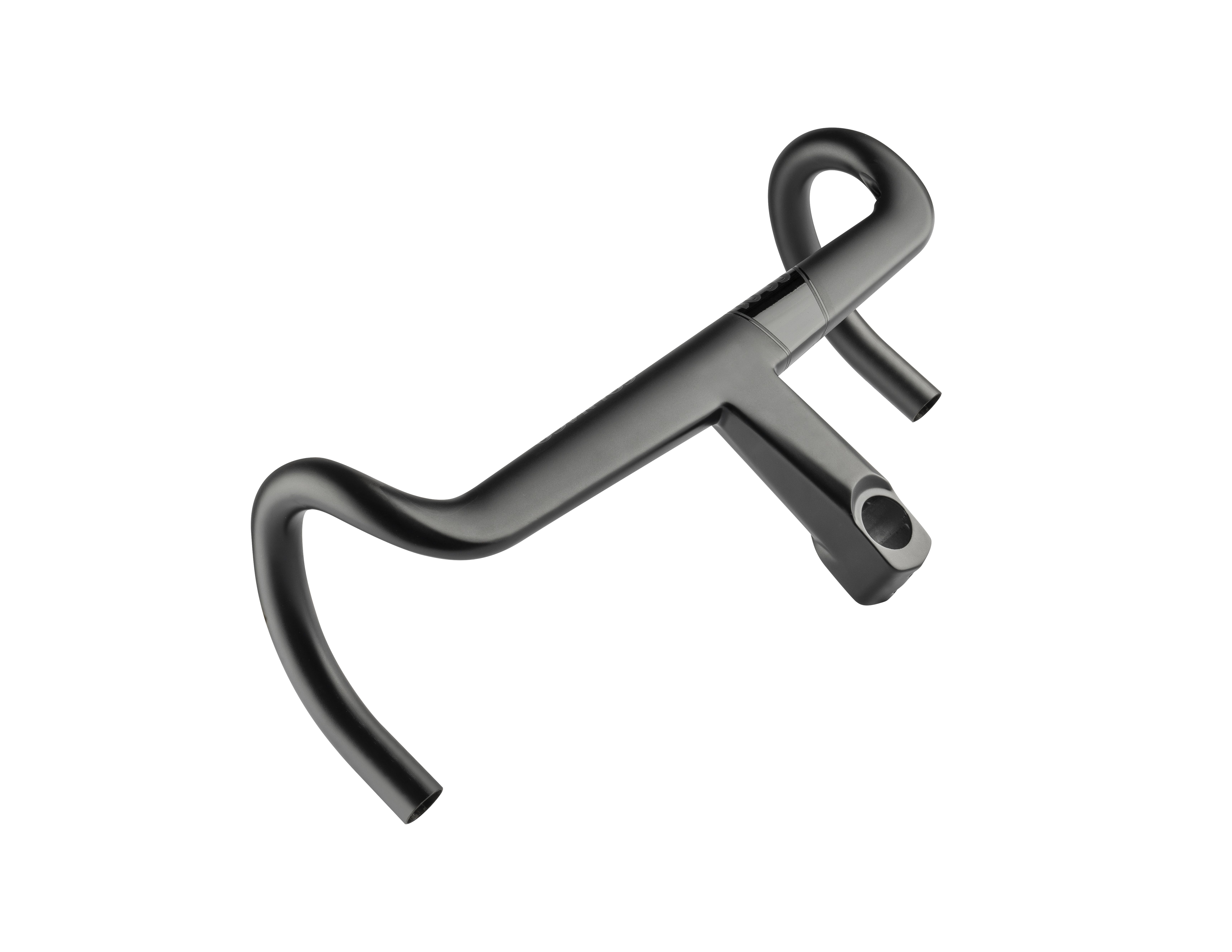 Notable frame features include a T47 bottom bracket (a shift away from the PressFit 82.5 system that debuted in the C60), Ceramic Speed SLT headset bearings with “lifetime” solid lubrication, a multi-tool hidden under the stem cap (the carrier is “a structural part of the fork” say Colnago, and hidden hoses and housing. There’s also a new CC.01 monocoque carbon one-piece bar/stem for the C68 that comes in 16 sizes, though Colnago states that the C68 is compatible with “any 31.8 diameter handlebar with [internal] cables using the Deda Superbox stem” as well as Deda’s Alanara integrated bar/stem.
Notable frame features include a T47 bottom bracket (a shift away from the PressFit 82.5 system that debuted in the C60), Ceramic Speed SLT headset bearings with “lifetime” solid lubrication, a multi-tool hidden under the stem cap (the carrier is “a structural part of the fork” say Colnago, and hidden hoses and housing. There’s also a new CC.01 monocoque carbon one-piece bar/stem for the C68 that comes in 16 sizes, though Colnago states that the C68 is compatible with “any 31.8 diameter handlebar with [internal] cables using the Deda Superbox stem” as well as Deda’s Alanara integrated bar/stem.
Another thing that makes the C68 so significant is that it is four bikes. Previous C-series bikes were all based on the road-racing paradigm. But the C68 is made for a new era. Reflecting the change that has come to the drop-bar segment there is a gravel version (fits tires at least 42mm wide) and an all-road version (fits tires up to around 35mm). But for those who stick to tradition, there is a road version (designed for 28s, fits some 32s), and even a rim brake variant of the road version. Each model gets unique geometry for the intended purpose: the road having the lowest fit and most aggressive handling, the gravel getting a more upright fit and better stability.
Finally, we get to one of the C68’s more unique and controversial features. Every C68 frame has an embedded NFC chip that accesses the frame’s “digital passport.” The idea is to guarantee the frame’s authenticity while tracking the frame’s specifications, history, and ownership. In this way, Colnago hopes to limit counterfeits and maintain the frame’s value in the secondary market.
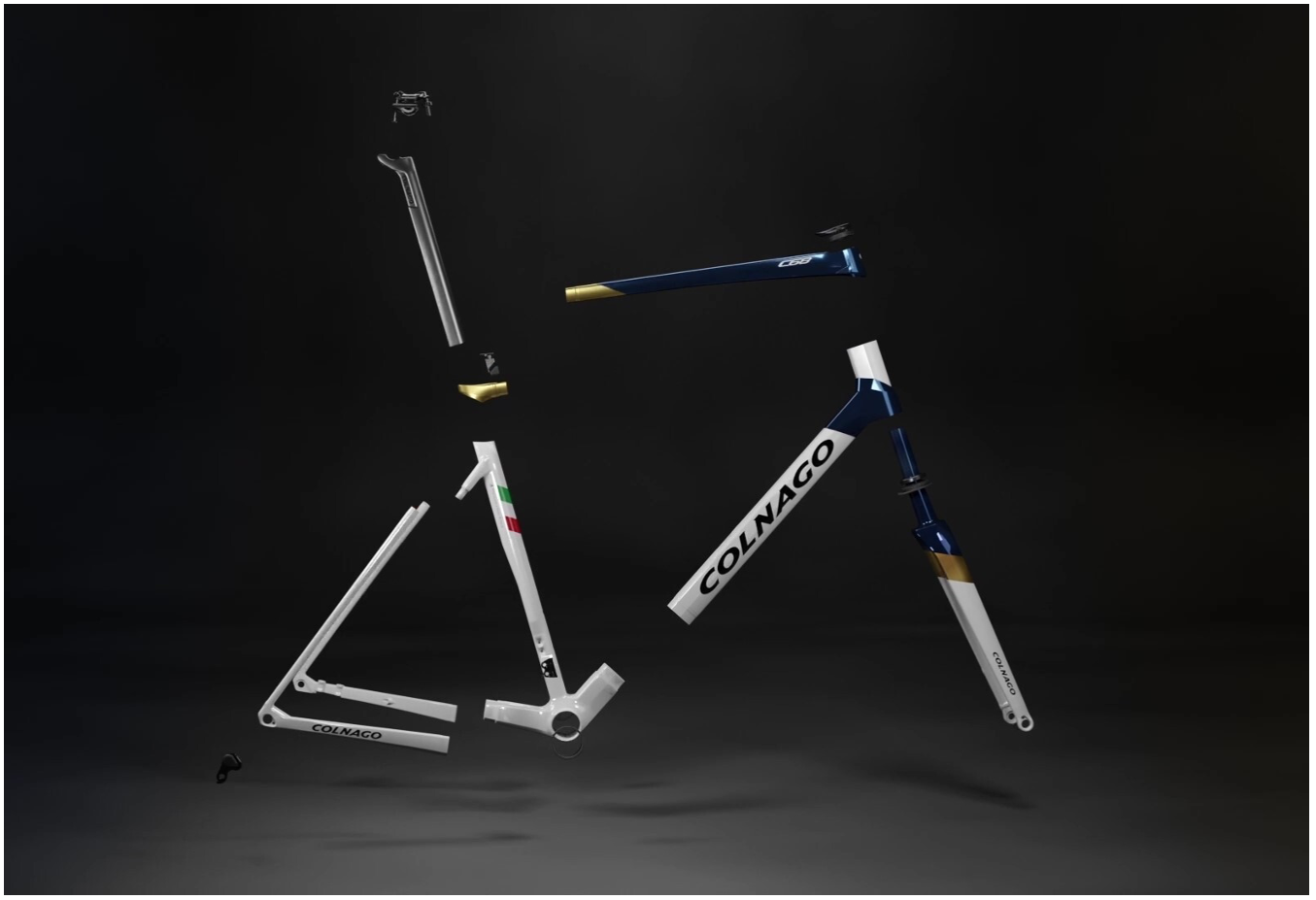 That’s all great, but the passport is stored in a blockchain and—for bikes designed on Colnago’s website and ordered direct from the company—includes a 3D NFT of the bike. And there are serious concerns about the amount of energy consumed by blockchain technology.
That’s all great, but the passport is stored in a blockchain and—for bikes designed on Colnago’s website and ordered direct from the company—includes a 3D NFT of the bike. And there are serious concerns about the amount of energy consumed by blockchain technology.
Want one? The lead time in SA is four months – minimum – with the September and November shipments all pre-sold. The frame only sells for R104 990, with a stock paint scheme—custom paint is extra and will take longer. The C68 Ti—the one with the titanium lugs—frameset sells for ten grand more… the local importer can break the waiting list news gently…
Few frames will ever be as impactful as the C40. But if the C68 rides as well as I’ve come to expect from the C-series—the C64 is the stuff of dreams—it’ll be yet another Colnago masterpiece.
READ MORE ON: c-series carbon bikes colnago hot bikes new products new releases

